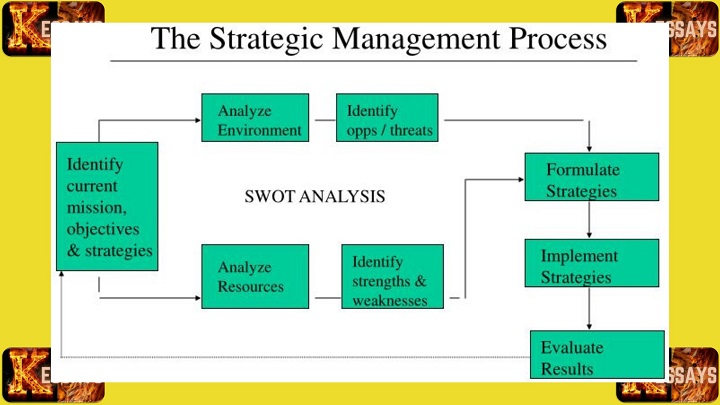The Mikes Bikes simulation is a powerful tool that allows individuals and teams to immerse themselves in the dynamic world of business management. It provides a realistic and engaging platform for participants to make strategic decisions, analyze market trends, and navigate the complexities of running a virtual bicycle manufacturing company. In order to excel in this simulation and achieve success, a well-defined strategic plan is essential. This essay will delve into the key components of a Mikes Bikes strategic plan, highlighting the importance of strategic planning and its role in guiding decision-making and driving business growth within the simulation.




Understanding Mikes Bikes Simulation
A. Overview of Mikes Bikes Simulation
The Mikes Bikes simulation is a computer-based exercise that simulates the operations of a bicycle manufacturing company. Participants assume the role of managers, making critical decisions across various functional areas, such as production, marketing, finance, and human resources. The simulation provides a realistic business environment with dynamic market conditions, competition, and customer preferences.B. Objectives and Goals of the Simulation
The primary objectives of the Mikes Bikes simulation are to develop participants' understanding of strategic management principles, enhance their decision-making skills, and foster a holistic view of business operations. Participants are challenged to maximize profitability, market share, and customer satisfaction while facing the complexities and uncertainties of the competitive landscape.C. Importance of Strategic Planning in Mikes Bikes
Strategic planning plays a pivotal role in the success of participants in the Mikes Bikes simulation. It provides a framework for setting goals, making informed decisions, and effectively allocating resources. A well-crafted strategic plan helps participants anticipate market trends, identify competitive advantages, and respond to challenges and opportunities that arise throughout the simulation.Analyzing the Business Environment
A. Conducting a SWOT Analysis
To develop an effective strategic plan in Mikes Bikes, it is crucial to conduct a comprehensive analysis of the business environment. This includes performing a SWOT (Strengths, Weaknesses, Opportunities, Threats) analysis to identify internal strengths and weaknesses as well as external opportunities and threats. By understanding these factors, participants can make informed decisions and capitalize on their strengths while mitigating potential risks.B. Identifying Market Trends and Competitive Landscape
A thorough analysis of market trends and the competitive landscape is essential in Mikes Bikes. Participants need to stay abreast of industry developments, customer preferences, and emerging technologies. By identifying market opportunities and anticipating competitive threats, participants can formulate strategies to gain a competitive edge and satisfy customer demands.C. Assessing Internal Resources and Capabilities
An evaluation of internal resources and capabilities is vital in developing a strategic plan for Mikes Bikes. Participants should assess their company's strengths, such as brand reputation, production capacity, and financial stability. Additionally, they should identify areas where improvement is needed, such as operational inefficiencies or skill gaps. This assessment enables participants to leverage their strengths and address weaknesses effectively.Read Also: The Role of Government Policies in Perpetuating the Eviction Crisis
Defining the Strategic Vision and Mission
A. Crafting a Clear and Inspiring Vision Statement
A compelling vision statement articulates the long-term aspirations of the company within the Mikes Bikes simulation. It serves as a guiding beacon, inspiring participants and aligning their efforts towards a common goal. A well-crafted vision statement provides clarity and direction, fostering a sense of purpose and unity within the organization.B. Establishing a Mission Statement that Guides Decision-making
A mission statement outlines the purpose and core values of the company in the Mikes Bikes simulation. It serves as a compass, guiding participants' decision-making and actions. A mission statement should be concise, meaningful, and aligned with the goals and objectives of the simulation. It communicates the company's commitment to delivering value to customers and stakeholders.C. Alignment with Mikes Bikes Simulation Objectives
The strategic vision and mission of the company should be closely aligned with the objectives of the Mikes Bikes simulation. By ensuring this alignment, participants can focus their efforts on achieving the desired outcomes, maximizing their performance, and gaining a competitive advantage within the simulated business environment.Read Also: Writing a PhD Thesis Defense Paper
Setting Strategic Goals and Objectives
A. Identifying Key Performance Indicators (KPIs)
Key Performance Indicators (KPIs) are quantifiable metrics that measure the success of strategic goals and objectives in Mikes Bikes. Participants should identify KPIs that align with their vision and mission, such as market share, profitability, customer satisfaction, or product innovation. These KPIs serve as benchmarks for evaluating progress and performance throughout the simulation.B. Establishing Measurable and Time-bound Goals
Strategic goals and objectives should be specific, measurable, achievable, relevant, and time-bound (SMART). Participants should define clear targets and timelines to ensure progress can be tracked effectively. By establishing SMART goals, participants can monitor their performance, make data-driven decisions, and adjust strategies as needed.C. Aligning Goals with Simulation Metrics and Targets
Participants must align their strategic goals with the simulation metrics and targets provided in Mikes Bikes. This ensures that the decisions and actions taken are directly linked to the desired outcomes within the simulation. By aligning goals with simulation metrics, participants can focus their efforts on meeting the predefined criteria for success.
Formulating Strategies
A. Differentiating Strategy: Creating a Unique Value Proposition
Participants can adopt a differentiation strategy in Mikes Bikes by creating a unique value proposition that sets their company apart from competitors. This involves identifying key attributes or features that make their products or services more desirable to customers. By differentiating themselves, participants can attract a loyal customer base and potentially command premium prices.B. Cost Leadership Strategy: Achieving Competitive Advantage through Cost Efficiency
A cost leadership strategy involves striving to be the lowest-cost producer in Mikes Bikes while maintaining acceptable product quality. Participants can achieve cost advantages through operational efficiency, supply chain optimization, and effective cost management. By offering competitive prices, participants can attract price-sensitive customers and gain market share.C. Focus Strategy: Targeting Specific Market Segments
A focus strategy involves concentrating resources and efforts on specific market segments or niche markets within Mikes Bikes. Participants can tailor their products, marketing strategies, and customer service to meet the unique needs and preferences of these targeted segments. By focusing on specific segments, participants can build strong customer relationships and establish a reputation for excellence within those markets.D. Innovation Strategy: Embracing Technology and Continuous Improvement
Innovation is essential in Mikes Bikes to adapt to changing market dynamics and gain a competitive advantage. Participants should foster a culture of innovation by encouraging creativity, embracing new technologies, and continuously improving their products and processes. By staying at the forefront of innovation, participants can meet evolving customer demands and outpace competitors.Allocating Resources and Budgeting
A. Assessing Resource Requirements
Participants must assess their resource requirements in Mikes Bikes, including financial resources, human capital, and production capacity. By understanding their resource needs, participants can allocate resources effectively to support their strategic goals and initiatives.B. Allocating Budgets to Different Strategic Initiatives
Budget allocation is a critical aspect of the strategic plan in Mikes Bikes. Participants should determine how much financial resources should be allocated to different strategic initiatives, such as marketing campaigns, research and development, or process improvement. By aligning budgets with strategic priorities, participants can ensure optimal resource utilization and maximize their return on investment.C. Ensuring Alignment with Mikes Bikes Simulation Constraints
Participants should consider the constraints imposed by the Mikes Bikes simulation, such as limited resources, time restrictions, or market conditions. By aligning resource allocation and budgeting decisions with these constraints, participants can make realistic and feasible plans that are achievable within the simulated business environment.Read Also: Writing a Nursing PICOT Paper: Fall Prevention
Implementation and Execution
A. Developing Action Plans for Each Strategy
Participants should develop detailed action plans for each strategy outlined in their Mikes Bikes strategic plan. These plans should outline specific tasks, timelines, responsible individuals, and key milestones. By breaking down strategies into actionable steps, participants can ensure clarity and facilitate effective implementation.B. Assigning Responsibilities and Establishing Accountability
Clear roles and responsibilities must be assigned to individuals or teams within the Mikes Bikes simulation. By clearly defining who is accountable for each task or objective, participants can promote a sense of ownership and ensure that all aspects of the strategic plan are effectively executed.C. Monitoring Progress and Making Necessary Adjustments
Regular monitoring of progress is crucial in Mikes Bikes to identify any deviations from the strategic plan. Participants should establish mechanisms to track key performance indicators, measure results, and compare them against set targets. By continuously monitoring progress, participants can make informed decisions and make necessary adjustments to their strategies if needed.Read Also: Advantages of IRR as a Method for Capital Budgeting
Risk Management and Contingency Planning
A. Identifying Potential Risks and Uncertainties
Participants should identify potential risks and uncertainties that may affect the implementation of their Mikes Bikes strategic plan. This involves conducting a comprehensive risk assessment, considering both internal and external factors that could impact business performance. By proactively identifying risks, participants can develop strategies to mitigate their potential impact.B. Developing Mitigation Strategies
Mitigation strategies should be developed to address identified risks in Mikes Bikes. Participants should assess the likelihood and potential impact of each risk and develop contingency plans or preventive measures to minimize their negative consequences. By implementing mitigation strategies, participants can enhance their ability to adapt and respond to unforeseen challenges.C. Establishing Contingency Plans to Address Unexpected Challenges
Contingency plans are essential in Mikes Bikes to prepare for unexpected challenges that may arise during the simulation. Participants should outline alternative courses of action and response plans to address potential disruptions or changes in the business environment. By having well-defined contingency plans, participants can navigate uncertainties and maintain business continuity.Read Also: EU Competition Law: Alfa’s Abuse of Dominance PC Gaming EU
Evaluating Performance and Metrics
A. Tracking Key Performance Indicators (KPIs)
Participants should regularly track and evaluate key performance indicators (KPIs) identified in their Mikes Bikes strategic plan. KPIs can include metrics such as market share, profitability, customer satisfaction, or return on investment. By monitoring KPIs, participants can assess their progress, identify areas for improvement, and make informed decisions to enhance performance.B. Analyzing Simulation Results and Metrics
Analyzing simulation results and metrics is crucial in Mikes Bikes to gain insights into business performance and the effectiveness of strategic decisions. Participants should analyze various data points, such as financial reports, market share data, or customer feedback, to assess the impact of their strategies and make data-driven decisions.C. Conducting Regular Performance Reviews
Regular performance reviews should be conducted to evaluate the overall effectiveness of the Mikes Bikes strategic plan. Participants should assess whether their goals and objectives are being met, if strategies are yielding the desired results, and if adjustments are needed. By conducting performance reviews, participants can identify areas for improvement and make informed decisions to enhance their performance within the simulation.Read Also: Jones & Davis Correspondent Inference Theory
Continuous Improvement and Adaptation
A. Learning from Simulation Results and Experiences
Participants should leverage the insights gained from simulation results and experiences within Mikes Bikes. By analyzing successes and failures, participants can identify lessons learned and areas for improvement. This learning process enables participants to continuously enhance their strategic planning and decision-making capabilities.B. Incorporating Lessons Learned into Future Strategies
Lessons learned from the Mikes Bikes simulation should be incorporated into future strategic plans. Participants should refine their approaches, adjust strategies, and capitalize on their experiences to optimize their performance. By embracing a continuous improvement mindset, participants can adapt their strategic plans to changing business environments and achieve better outcomes.C. Adapting the Strategic Plan to Changing Business Environment
Flexibility and adaptability are essential in Mikes Bikes to respond to evolving market dynamics and competitive forces. Participants should regularly review and update their strategic plans to align with changing business conditions. By embracing agility, participants can seize new opportunities, mitigate risks, and maintain a competitive edge within the simulation.

Comments are closed!